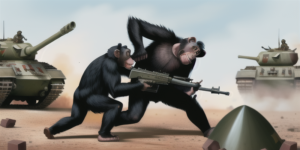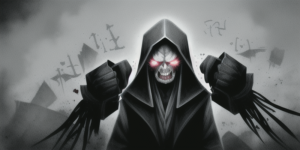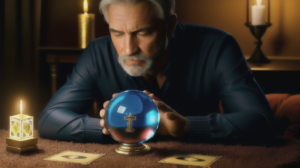We human beings are complex creatures, born of paradoxes, entwined in contradictions. We are capable of great love and deep hatred, incredible selflessness and shocking selfishness. But if there’s one thing that binds us all, it’s our pursuit of pleasure.
Our yearning for pleasure is like a thread running through the tapestry of our lives. We seek it in every form, in every moment, in every experience. We savour the sweet taste of chocolate, the euphoric rush of a roller-coaster ride, the warm glow of a lover’s embrace. We chase after the adrenaline high of an adventure, the heartening delight of a compliment, the soothing calm of a serene landscape. Pleasure, it seems, is our North Star, guiding our actions, shaping our lives.
This craving for pleasure isn’t just a philosophical or psychological concept; it’s rooted deep within our biology, embedded in the very fabric of our being. The orchestrator of this pleasure symphony is a chemical in our brain called dopamine.
You see, our brain is like a bustling metropolis, teeming with activity. At any given moment, millions of chemical reactions are taking place, signals are being sent, information is being processed. Amid this complex network, dopamine plays a crucial role. It’s our brain’s reward molecule, the joy juice that makes us feel good.
When we engage in an activity that gives us pleasure, our brain rewards us by releasing dopamine. The sweetness of the chocolate, the thrill of the roller-coaster ride, the intimacy of a lover’s embrace – all these experiences trigger a surge of dopamine in our brain, bathing us in a wave of bliss, of ecstasy, of delight.
However, as fascinating as this mechanism might be, it has a flip side. You see, our brain is not just a pleasure-seeking entity; it’s also a survival machine. When we are stressed, when we face challenges, our brain looks for ways to cope, to survive. And guess what it often turns to? Yes, you guessed it right – dopamine, our brain’s own happiness drug.
Imagine this: you’re having a tough day at work. Deadlines are looming, emails are piling up, and the stress is mounting. Your brain, sensing this stress, starts looking for a dopamine boost, a quick shot of pleasure to ease the tension. You suddenly remember that chocolate bar stashed in your drawer. You take a bite, and the rich, creamy taste sends a flood of dopamine into your system, washing away your stress, at least for a while.
But here’s where the plot thickens: dopamine is not just about one-off pleasure hits; it’s also about anticipation, about craving. Once your brain associates the chocolate with the dopamine high, it starts craving more. Every time you feel stressed, it nudges you towards the chocolate bar, creating a neural pathway that becomes stronger with each repetition. And before you know it, you’ve slipped into the clutches of addiction.
This addiction to pleasure isn’t limited to food; it extends to a wide array of activities and substances. Some find their dopamine fix in shopping, the thrill of buying a new dress or gadget triggering a pleasure rush. Others seek it in sex, the physical gratification leading to a dopamine spike.
Then there are substances like alcohol or nicotine that are notorious for their dopamine-inducing effects. Consuming these substances is like taking a dopamine shortcut, a fast-track to pleasure. But as intoxicating as the high might be, the crash that follows is equally devastating. The dopamine levels plummet below the normal baseline, leaving you feeling low, restless, irritable. And to escape this discomfort, you reach out for more of the substance, ensnaring yourself in a vicious cycle.
This cycle of pleasure addiction can be a dangerous trap. It can lead you down a path of self-destruction, harming your health, your relationships, your life. But it’s not an inescapable trap. There’s a way out, a beacon of hope, and that’s awareness.
Awareness is the first step towards breaking free from the chains of addiction. It’s about recognizing your patterns, understanding your triggers, and noticing your cravings. It’s about catching yourself in the act, observing your thought process, and making conscious choices.
Consider this: you’re under stress, and you find yourself reaching out for that chocolate bar or that glass of alcohol. But this time, you don’t just mindlessly give in to the craving. Instead, you pause, you reflect. You ask yourself: ‘Why am I doing this? Am I really hungry, or am I just trying to escape my stress? Is this drink going to solve my problems, or is it just going to give me a temporary high?’
This kind of introspection, this moment of self-awareness, can be a turning point. It can help you understand the link between your stress and your pleasure-seeking behaviour. It can make you realize that your addiction is not just a habit, but a coping mechanism, a survival strategy. And this realization can empower you to seek healthier, more constructive ways to deal with your stress, to manage your emotions, to navigate your life.
However, awareness is just the beginning; the real challenge lies in translating this awareness into action, into change. The approach is about consciously experiencing pleasures, not about renouncing or avoiding them. Through awareness, you gain the capacity to choose whether to comply with the impulse or not. As you consciously decide not to engage with the compulsive craving, a shift occurs in the habitual cycle. This conscious decision communicates to your body and its biological needs, triggering an adjustment. Over time, you’ll find that your body no longer demands the same high that it once did. The cycle of seeking ever-increasing levels of pleasure becomes more balanced and sustainable.
Remember, there’s nothing wrong with seeking pleasure. Pleasure is a beautiful part of life. It adds color to our existence, flavor to our experiences. But when pleasure turns into addiction, it becomes a problem. The key lies in moderation, in balance. It’s about enjoying that chocolate bar, but not at the cost of your health. It’s about savouring that shopping spree, but not at the expense of your finances. It’s about relishing that intimate moment, but not at the risk of your emotional wellbeing.
Breaking free from pleasure addiction isn’t about renouncing pleasure; it’s about reclaiming control over your life. It’s about understanding the role of dopamine in your life, recognizing its allure, acknowledging its pitfalls. It’s about being mindful of your choices, responsible for your actions. It’s about celebrating pleasure, but also respecting its power.
In the end, life is a journey, a roller-coaster ride of ups and downs, twists and turns. It’s a journey of discovery, of learning, of growth. And one of the most profound lessons we can learn is about our relationship with pleasure. We can learn to dance with dopamine, to harness its power, to enjoy its high, but without losing ourselves in its grip.
By doing so, we can lead a life of balance, of fulfilment, of joy. We can savour the sweetness of the chocolate, the thrill of the roller-coaster ride, the warmth of the lover’s embrace, without being enslaved by them. We can indulge in pleasure, without being addicted to it. And that, my friends, is the art of living.





